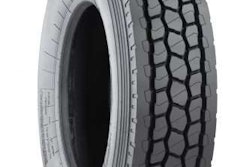If you haven’t yet noticed, we are in the midst of a massive consolidation of the truck dealer market.
The total number of medium- and heavy-duty truck dealers has been on the decline for a while, but in the past year the rate has increased significantly. No single OEM has been resistant to the consolidation, and in some cases, the changes have occurred at such a rapid pace that rarely more than a week goes by without news of another ownership change.
Most of the changes have been relatively small—single- or two-location dealers selling to larger, more established groups—but if you look back at the last two years or so, you can find a fair number of sizable, multi-facility transactions.
The independent aftermarket hasn’t been immune to consolidation during the same period, though we haven’t seen anything close to what’s going on with truck dealers.
I think that’s a good thing.
For the most part, the independent aftermarket operates on a smaller scale than truck dealers. Most distributors have fewer locations and employees, and while they commonly serve a wider variety of customers, the conventional aftermarket customer typically has fewer trucks than the fleets relying on medium- and heavy-duty truck dealers.
A smaller carrier or owner-operator requires a different level of service than what’s expected from a dealer, and the independent aftermarket has prospered for as long as it has because the businesses within it are best suited to provide that service.
A customer with a dozen pre-2007 model year trucks can get good service from a truck dealer; but they’re likely never going to be the dealer’s priority.
Consolidation has created a wealth of multi-state, multi-brand dealer groups that have the size and scope to provide trucks, parts and service to customers across huge geographical areas. There are dealer groups that can service a truck from Miami to Los Angeles and back. There are other groups that can provide regional fleets service across their entire route area, whether it be in the Northwest, Southeast or anywhere in between.
For a customer within those areas, knowing that network of support is out there is reassuring. But if we think back to that 12-unit used truck fleet, just because such support exists doesn’t mean it is the fleet’s best option. Once a dealer achieves the economies of scale to run their business across an entire region, it benefits them to find customers who are doing the same.
The aftermarket has thrived by servicing everyone else. And I hope it can withstand (or minimize) consolidation so it can to continue to do the same.
I should note, I don’t think a service center purchasing a second location or a three-store distributor adding a fourth is a threat to the independent aftermarket. Not at all. I only hope as aftermarket businesses consolidate and/or expand, they don’t overlook any customers that have helped provide them the opportunity.
There are always going to be owner-operators and local municipal fleets that need hands-on customer service. There are always going to be customers searching for obsolete parts; for specialized service; for accelerated parts delivery to get their vehicle—and their livelihood—back on the road.
Independent aftermarket businesses need to maintain their versatility to service each of these customers as they expand. Dealer consolidation has created enough cracks in that business model for smaller customers to slip through. It’s time for the aftermarket to snatch them up, and keep them in the channel.












